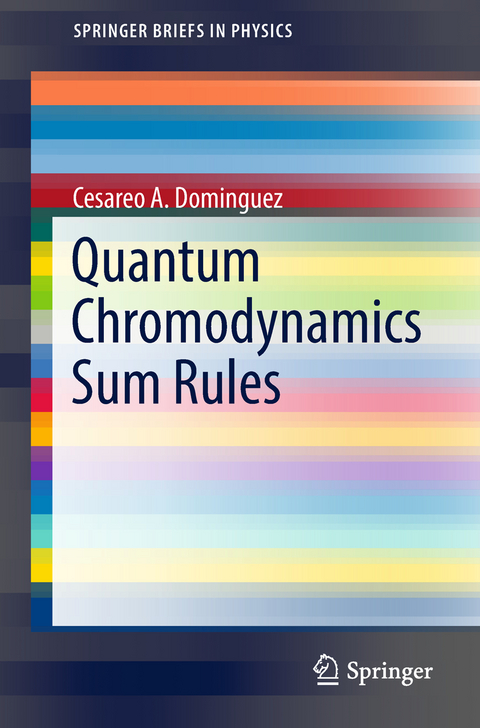
Quantum Chromodynamics Sum Rules
Springer International Publishing (Verlag)
978-3-319-97721-8 (ISBN)
This concise book provides the necessary background to allow interested readers to launch original research projects on the subject matter. Currently, this material is not available from one single source, and is either spread out over numerous journal publications, or covered in long and technical monographs.
At the core of this book lies the sum rule approach to obtain analytic results in Quantum Chromodynamics (QCD), the current theory of strong interactions among quarks and gluons. This method fully complements Lattice QCD, the corresponding computational approach based on discretizing QCD on a space-time lattice.
Applications include standard determinations of hadronic particle properties with extensions to finite temperature and density, and possibly involving the presence of extreme magnetic fields. The latter cases include stellar objects (e.g. neutron stars and magnetars) as well as high-energy proton-proton and heavy-ion collisions.
Further topics concern the determination of the fundamental parameters of QCD, e.g. quark masses and the quark-gluon couplings, the hadronic contribution to the anomalous magnetic moment of the muon, and electromagnetic coupling at the the W-boson mass scale.
Cesareo Augusto Dominguez is Emeritus Professor of Theoretical Physics in the Department of Physics, University of Cape Town, South Africa. His many awards include: Fellow of the Mexican Academy of Science (elected in 1977). Alexander von Humboldt Research Fellowship (awarded in 1982). Associate Member, International Centre for Theoretical Physics, Trieste, Italy, 1985-1997. John Simon Guggenheim Memorial Foundation Fellowship (awarded in 1994).
1 Introduction.- 2 Operator Product Expansion in QCD.- 3 Renormalization Group Equation.- 4 Integration in the Complex s-Plane.- 5 Determination of the QCD Strong Coupling.- 6 Hadronic Spectral Functions.
"This book is intended for readers with good knowledge of quantum field theory and quantum chromodynamics (QCD). It is addressed to readers planning to start research in QCD in the frame work of sum rules. ... The five appendixes describe dressed propagators, correlators and spectral functions. Overall a very useful book for researchers." (T. C. Mohan, zbMATH 1405.81007, 2019)
“This book is intended for readers with good knowledge of quantum field theory and quantum chromodynamics (QCD). It is addressed to readers planning to start research in QCD in the frame work of sum rules. … The five appendixes describe dressed propagators, correlators and spectral functions. Overall a very useful book for researchers.” (T. C. Mohan, zbMATH 1405.81007, 2019)
| Erscheinungsdatum | 11.08.2018 |
|---|---|
| Reihe/Serie | SpringerBriefs in Physics |
| Zusatzinfo | XII, 113 p. 26 illus., 8 illus. in color. |
| Verlagsort | Cham |
| Sprache | englisch |
| Maße | 155 x 235 mm |
| Gewicht | 207 g |
| Themenwelt | Naturwissenschaften ► Physik / Astronomie ► Atom- / Kern- / Molekularphysik |
| Naturwissenschaften ► Physik / Astronomie ► Hochenergiephysik / Teilchenphysik | |
| Naturwissenschaften ► Physik / Astronomie ► Quantenphysik | |
| Naturwissenschaften ► Physik / Astronomie ► Theoretische Physik | |
| Schlagworte | Hadronic Matter in Neutron Stars • Hadronic Physics: QCD Sum Rule Approach • QCD sum rules • Quantum Chromodynamics at Finite Density • Quantum Chromodynamics at Finite Temperature • Quantum Chromodynamics in Extreme Magnetic Fields • Quantum Chromodynamics Sum Rules |
| ISBN-10 | 3-319-97721-0 / 3319977210 |
| ISBN-13 | 978-3-319-97721-8 / 9783319977218 |
| Zustand | Neuware |
| Haben Sie eine Frage zum Produkt? |
aus dem Bereich


